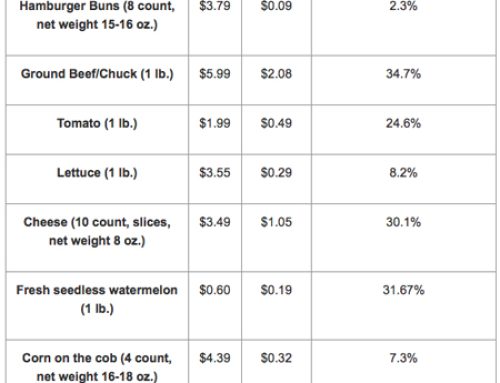Source: AgWeb.com
Despite weekend rains sweeping the northern Corn Belt, U.S. corn and soybean conditions sit at the second-lowest level of quality in history. The weekly, sizable declines in key areas of the Corn Belt from the stubborn drought situation come as the corn crop starts to enter a critical time for development.
According to USDA-NASS, corn condition ratings across the U.S. dropped to only 50% in good to excellent condition this week. The five-point decline in a week’s time means this year’s corn crop has only been rated worse one other time in history: 1988.
That’s also a change from last week, when both 1992 and 1988 held the record for lower ratings.
Heading into the weekend, farmers across key areas of the Corn Belt hoped for rain. Instead, the system stayed north, producing decent rainfall for parts of South Dakota, Iowa and northern Illinois. It wasn’t enough to save the corn crop, with more weekly drops in the following states:
Illinois: 26% good to excellent, down 10 points
Indiana: 47%, down 9 points
Iowa: 56%, down 3 pointes
Missouri: 31, down 12 points
Nebraska: 57%, down 2 points
South Dakota, 47%, down 1 point
It wasn’t all bad news when it comes to condition ratings. North Dakota’s corn ratings improved two points, now at 65% good to excellent.
It’s still early enough for the nation’s soybean crop to recover with any rains over the next couple of months, but USDA-NASS field reporters are also growing less optimistic about the U.S. soybean crop. Soybean crop condition ratings are currently the second-worst on record, only behind 1988, with 51% of the crop rated good to excellent. That’s a three-point drop in a week.
States with noticeable declines include:
Illinois: 25% good to excellent, down 8 points
Indiana: 47%, down 10 points
Iowa: 48%, down 6 points
Missouri: 32%, down 18 points
Areas On Track for Driest June Ever
USDA meteorologist Brad Rippey says there are several areas still on track for the driest June ever. He says the 30-day percent of normal precipitation map certainly pinpoints some of the drier spots, even after the weekend rainfall.
Before the weekend rains, Rippey said at least seven areas across the Midwest were on track for the driest June ever. After the rains, that’s now dropped to three.
Location Total Through June 25…Record for June:
Decatur, Illinois 0.48″…0.53″ in 1933
Lincoln, Illinois 0.26″…0.42″ in 1936
Peoria, Illinois 0.25″…0.45″ in 1936
Carbondale, Illinois
0.10″…0.23″ in 1933
According to Rippey, the areas removed from the potential record list for the driest June ever include: Dubuque, Iowa, with a June 1-25 total of 2.14″ of rain; Minneapolis, Minn., with 0.86″ of rain; and Grand Rapids, Mich., with 0.44″ rain.
Near Records for Other Areas of the Midwest
Rippey points out that while other areas of the Corn Belt may not be on pace for the driest June ever, the 30-day percent of normal precipitation map certainly pinpoints some of the drier spots, even after the weekend rainfall.
“I looked at some of the major observation sites, and some places will end up very close to previous June records, though many of which were set in 1922, 1933, 1936, 1963 or 1988,” says Rippey. “The big Midwestern losers in the weekend rainfall sweepstakes include Missouri, most of Illinois and southeastern Nebraska, as shown below. Spotty relief occurred in other areas.”
USDA-NASS says 52% of the nation’s subsoil moisture is considered adequate to surplus. Only 14% of Illinois is in the adequate category. 0% is rated surplus. In Michigan, 13% is rated adequate.
Forecast for More Rain?
The story is far from over for this year’s crops, even with the large drops in ratings. NOAA’s updated 6 to 10 day outlook, as well as the 8-14 day forecast, shows improved chances for rain across areas that missed moisture this past weekend.



